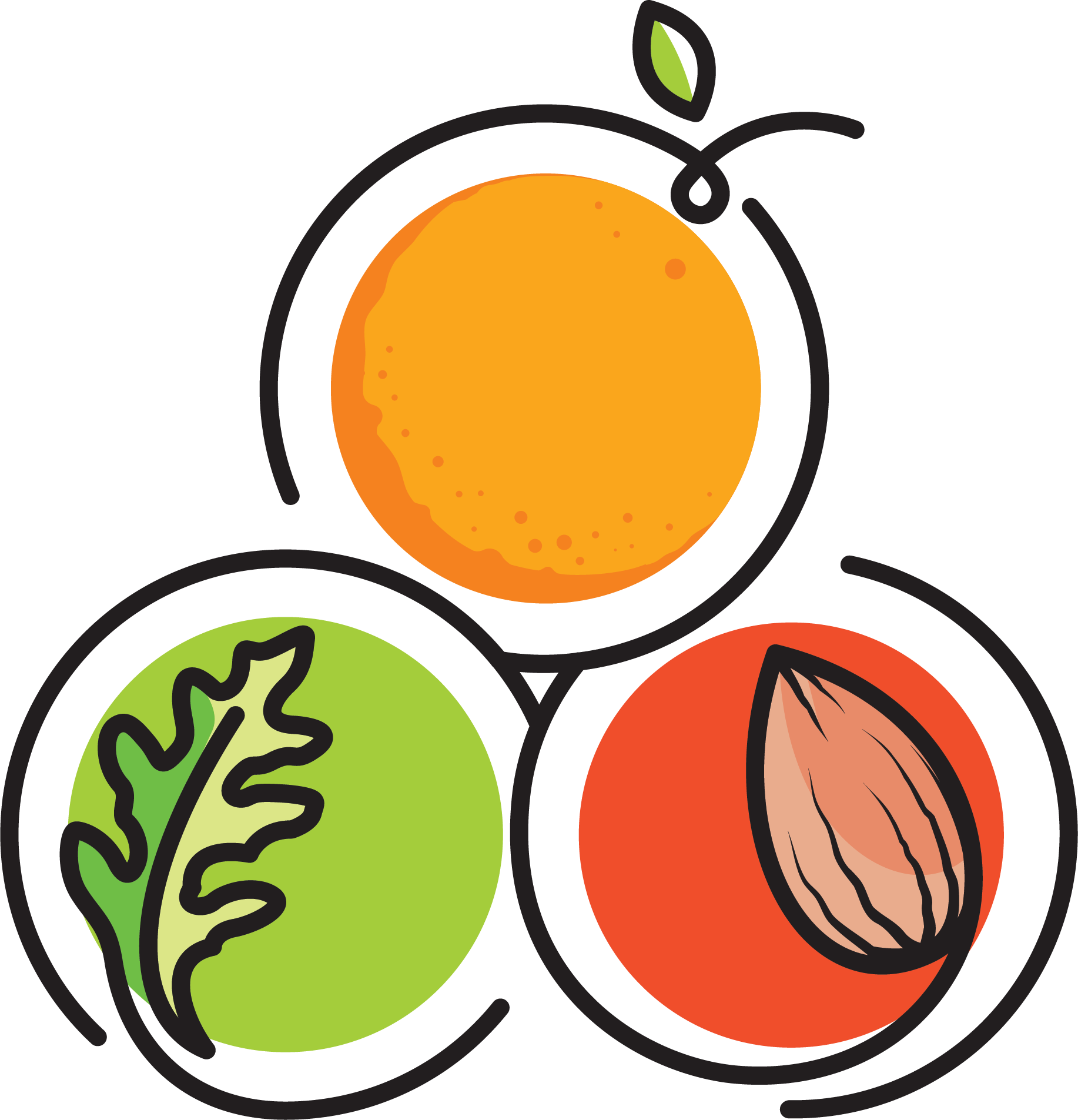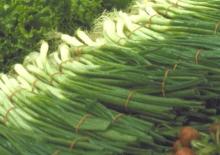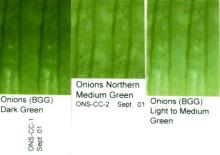Maturity and Quality
Maturity of green onions is determined primarily by size which is largely determined by seeding density. Green or "bunching" onions are selected varieties of white onion (Allium cepa) planted at high density or from the non-bulbing onion group (Allium fistulosum) generally called Japanese-bunching. Harvest maturity is generally accepted as mean diameter of 0.6 to 1.3 cm (1/4 to 1/2 inch) in diameter at the base plate of the immature bulb.
Quality green onions have a thin, white shank or neck at least 5 to 7.5 cm (2-3 inches) in length. Green onions should be well-formed (at most slightly curved or angular), uniform in shape, thin-necked, turgid, bright in color, well cleaned, and free from excessive roots, decay, insect-injury, mechanical damage, broken or crushed leaves, or dehydrated clipped-ends.
U.S. Grade No. 1, No. 2 (Standards established June 1947)
Postharvest Handling and Storage
0°C (32°F)
Green onions held at 32°F will remain fresh and flavorful for up to 4 weeks. Green onions are highly perishable and normally marketed over a short period. Lowering and removing the heat of respiration as well as preventing water loss is critical. Package-icing and perforated polyethylene film liners are used to maintain quality. Typically, storage life of green onions at 10°C (50°F) is 7 to 10 days. Higher temperatures greatly accelerate yellowing and decay of the leaves. Green onions benefit from light misting.
| Temperature °C (°F) |
ml CO2/kg·hr |
| 0 (32) | 5-16 |
| 5 (41) | 9-19 |
| 10 (50) | 18-31 |
| 15 (59) | 33-58 |
| 20 (68) | 40-90 |
| 25 (77) | 49-105 |
To calculate heat production, multiply ml CO2/kg·hr by 440 to get BTU/ton/day or by 122 to get kcal/metric ton /day.
Green onions are not sensitive to external ethylene.
>98%
Information varies widely on the optimal conditions and extent of benefit of CA for green onions. In general, a controlled atmosphere of 2% oxygen with 5% carbon dioxide at 0°C (32°F) should allow 6 to 8 weeks storage. Visually, green onions tolerate 1% O2 and 10% CO2 but off-flavors have been associated with extended storage above 5°C (41°F).
Disorders
Freezing Injury. Freezing injury will be initiated at -1.0°C (30.6°F). Symptoms of freezing injury include a water-soaked appearance of bulb or leaves and wilted or gelatinous leaves, after thawing. The bulb will become soft or gelatinous in texture in outer tissue. Freeze-injury is rapidly followed by bacterial soft-rot decay.
Curvature. Upward bending of young, elongating shoots will occur in horizontally packed green onions. Prompt cooling and storage at 0°C (32°F) will largely prevent this defect. CA-packaging can further retard curvature (See Responses to CA).
Harvesting, trimming, and banding should be done gently to prevent crushing or other injuries. At harvest, pulling is usually done without undercutting. Bunching is done in the field or in a packing shed. Bruising is common and leads to rapid decay when attention to rapid cooling (within 3 hours of harvest) and cold chain control are not applied.
Diseases may be an important source of postharvest loss in combination with rough handling and poor temperature control. Common diseases are Bacterial Soft-Rot (primarily Erwinia carotovora and Pseudomonas spp) and Grey Mold (Botrytis cinerea). Grey Mold is often associated with barely visible preharvest injury to tender foliage by chemical applications or ozone injury from air pollution.
Special Considerations
Odor. Green onions produce odors that may be adsorbed by many other commodities such as apples, grapes, and mushrooms.
Package-Ice. Used for transportation of green onions has been implicated on several occasions as the cause of outbreaks of food-borne illness due to the pathogens Shigella, Cryptosporidium, and others. Water quality and hygienic handling of ice is essential.
Proper selection of packaging films together with proper temperature management can greatly extend the shelf-quality of green onions trimmed or prepared for bulk ready-to-use format.





